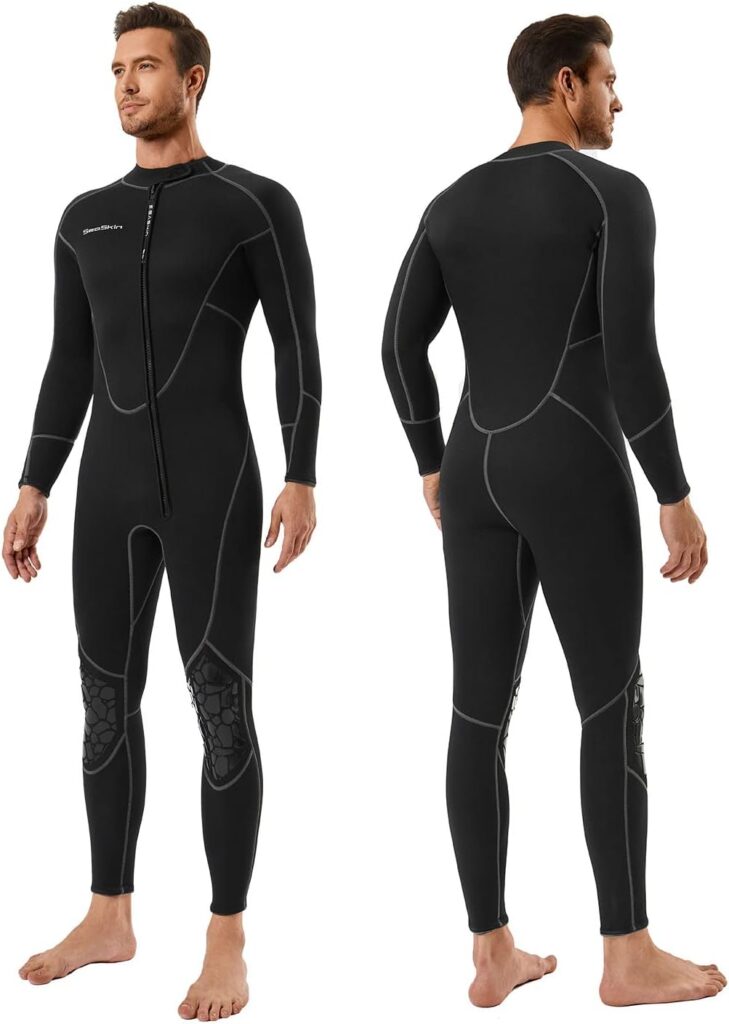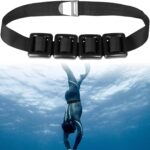How To Know What Diving Weight You Need Free Diving
Ever wonder how to know what diving weight you need free diving without ending up like a human anchor on the ocean floor?
Picture this: you’re gliding through crystal-clear water, feeling like a mermaid, until bam, you sink faster than yesterday’s bad souffle. Not the grand entrance you were planning.
Let’s fix that before you turn into reef décor.
How to Know What Diving Weight You Need Free Diving
The safest, most reliable way to know what diving weight you need for free diving is to start with a conservative estimate and then test it in the water using two key checks:
- Surface Float Test: With your lungs half full, you should still float at the surface without kicking. If you sink right away, you’re too heavy.
- Neutral Buoyancy at 10 Meters: When you glide down to around 10 meters, you should feel weightless, neither sinking nor floating. This point matters because it gives you control on the way down but keeps you positively buoyant in the last, most critical meters near the surface where blackouts can happen.
Most instructors recommend beginning with a freediving weight belt using small weights, adding or removing in 0.5 to 1 kg steps until both checks work perfectly. Why? Because water salinity, wetsuit thickness, and even your body composition change how much lead you need.
|
|
|
|
Why Weighting Matters More Than Most Beginners Realize
When learning how to know what diving weight you need free diving, many think it’s just about sinking faster. That’s a dangerous half-truth. Correct weighting affects:
- Safety: Too much weight drags you down even if you blackout. That’s why experts insist on being positive in the top 10 meters.
- Efficiency: The right weight saves oxygen because you’re not finning against buoyancy the whole time.
- Comfort: Nobody enjoys fighting a dive belt with weights that feel like medieval armor.
Studies from freediving safety organizations confirm that most shallow-water blackouts happen near the surface, so weighting for positive buoyancy there is life insurance you can wear.
Key Variables That Decide Your Perfect Weight
Knowing how to know what diving weight you need free diving means factoring in more than body weight. Here’s what shifts the numbers:
- Wetsuit Thickness: A 5 mm suit can add several kilos of buoyancy. Foam compresses with depth, so you’ll be lighter deeper down.
- Salt vs Fresh Water: The ocean floats you more than a lake. Expect to drop some lead if switching from sea to freshwater dives.
- Body Composition: Higher body fat floats better, requiring extra weight for the same neutral point.
- Depth Plan: Deep dives often use slightly less lead so you remain positive near the surface.
This is why a free diving weight calculator online can give you a rough start, but in-water testing is always final.
A Simple Starting Formula Before You Dive
Here’s a practical approach for beginners:
- Start with roughly 1 kg per mm of wetsuit for an average adult in salt water.
- Test at the surface first, then adjust in small increments.
For example, with a 5 mm suit, begin around 5 kg on your diving weight belt, then fine-tune using the 10 m and surface tests.
The Neutral Buoyancy Test: Your Gold Standard
The neutral buoyancy test isn’t fancy, it’s science made simple. After gearing up:
- Descend on a line to 10 meters.
- Stop moving and relax completely.
- You should hover effortlessly without sinking or floating.
If you rise, add a little weight. If you sink, remove some. Always make changes gradually because even 0.5 kg can change your dive experience.

Balancing Safety with Performance
Freedivers sometimes debate: neutral at 10 meters or at half the depth you plan to reach?
- Shallow reef diving (4–10 m): Slightly more weight helps you stay down without constant finning.
- Deep line training (20–40 m): Less weight keeps you positive near the surface, reducing blackout risk.
Experts recommend erring on the side of safety. Remember: swimming up with tired legs is easier than fighting lead on the way up.
Saltwater vs Freshwater Adjustments
Switching locations? Salty ocean water floats you more than freshwater lakes or quarries. Expect to reduce lead weight when moving to freshwater because you’ll naturally sink easier there.

Wetsuit Changes and Weighting
Going from a 7 mm winter suit to a 3 mm tropical suit? That’s like changing the rules mid-game. Thinner suits mean less buoyancy, so you’ll carry less weight. Always re-test when gear changes.
Weight Placement and Quick Release Safety
Whether you use a diving weight belt, a vest, or a neck weight for pool training, one rule never changes: it must come off instantly in an emergency.
- Rubber belts grip better and stay in place.
- Marseille buckles release quickly with one pull.
- Keep weights spread evenly for comfort and balance.
Never skip this safety check. Freediving instructors drill it for a reason.
Common Mistakes Beginners Make
- Copying someone else’s weight: Body size, suit thickness, and location differ. Your buddy’s setup isn’t automatically yours.
- Adding too much lead: Sinking fast feels fun until you realize you can’t float after a blackout.
- Ignoring small increments: Half a kilo can mean the difference between perfect and dangerous.
- Skipping the surface float test: It exists to keep you alive.
Discipline-Specific Weighting
- Spearfishing: Slightly heavier for staying near reefs without constant kicking.
- Line Diving: Lighter setups for deeper dives with focus on safety near the surface.
- Pool Training: Neck weights improve trim but aren’t for open water.
The Adjustment Checklist for Every Dive
Before entering the water, run through this list:
- Buddy present and watching.
- Belt secured but releases in one pull.
- Start conservative, add weight slowly.
- Check neutral buoyancy at 10 m.
- Verify positive float at the surface.
FAQs on How To Know What Diving Weight You Need Free Diving
How to scuba dive with correct weighting?
Scuba diving gear set uses similar neutral buoyancy principles, but tanks change buoyancy during the dive, so divers carry slightly more weight.
Do I need a snorkeling gear set for freediving weighting?
Snorkeling gear set isn’t for depth but can help with surface training before adding a diving weight belt.
What about a dive belt with weights vs vests?
Belts are easier to drop fast in emergencies. Vests distribute weight better but must still ditch quickly.
The Bottom Line on How To Know What Diving Weight You Need Free Diving
Learning how to know what diving weight you need free diving isn’t about math alone. It’s about safety, control, and comfort under water. Start light, test often, and remember: the ocean will always be there tomorrow. Getting weighting right means you will be too.



